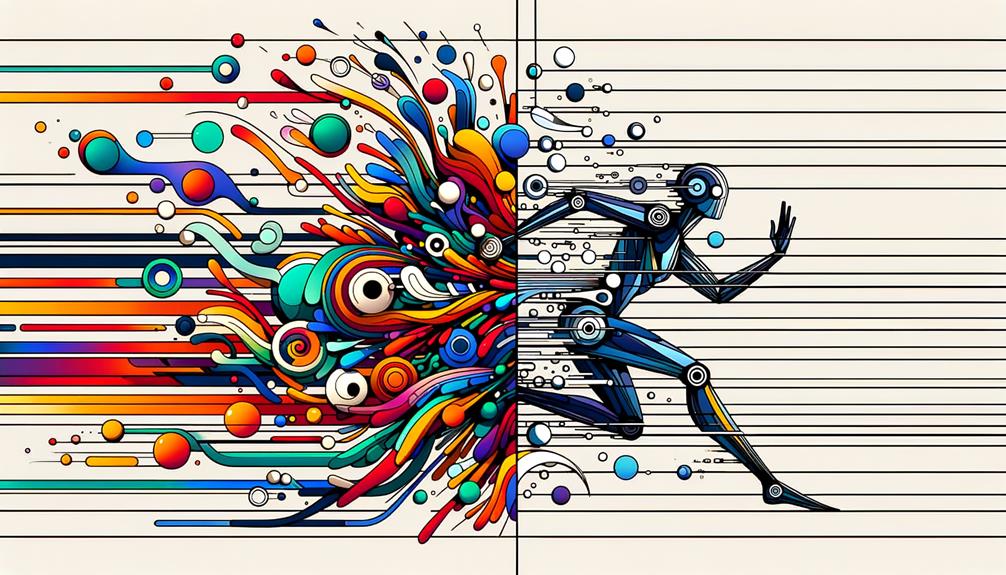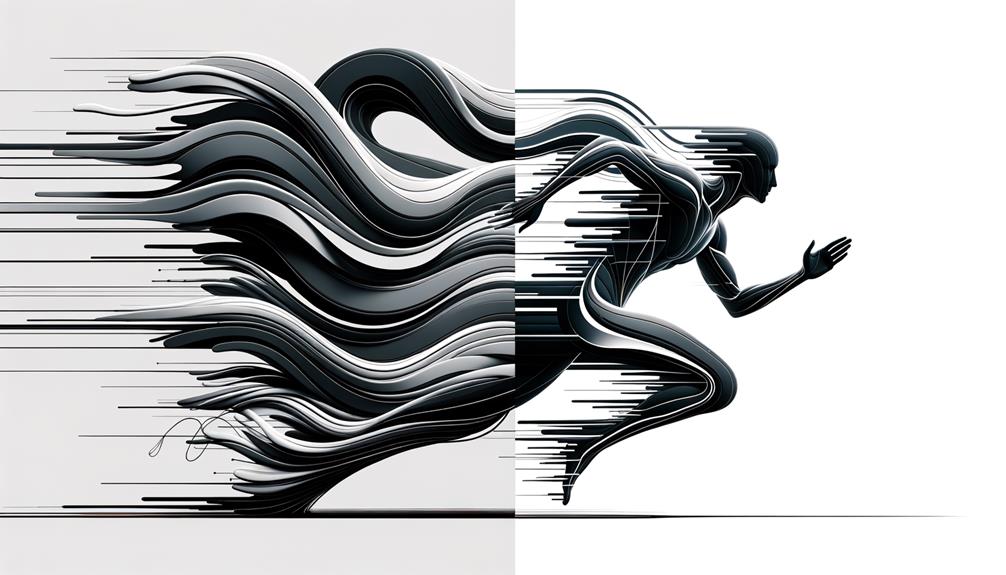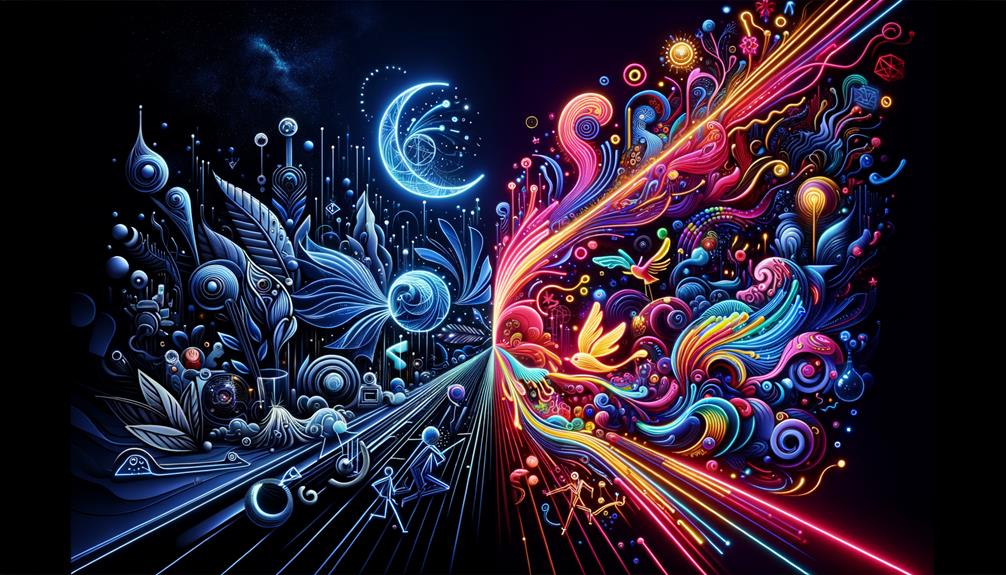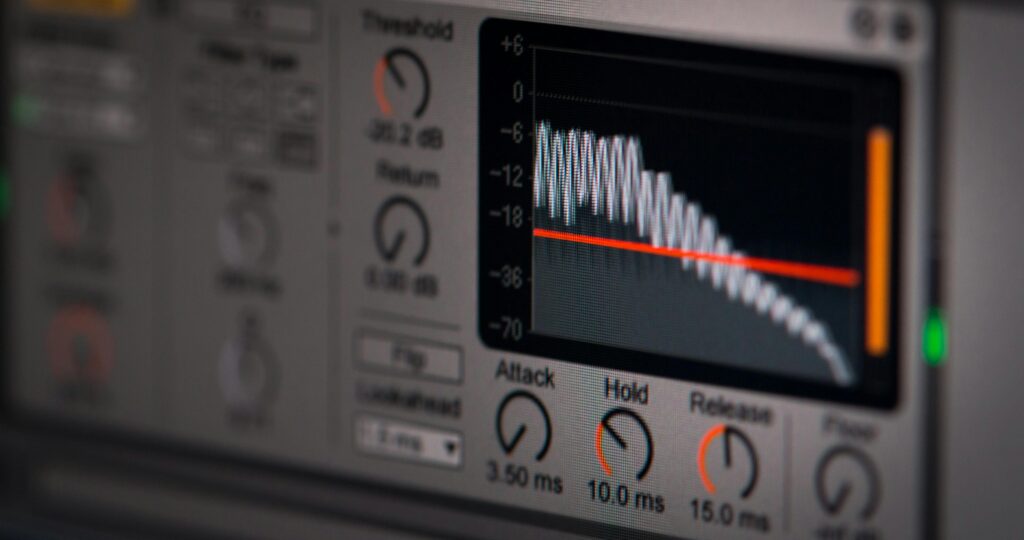Isn’t it intriguing how motion graphics and animation, while often used interchangeably, serve unique purposes in storytelling? Having explored both realms, I’ve come to appreciate the nuanced differences that set them apart.
Motion graphics simplify and enhance information visually, making them ideal for conveying messages quickly and effectively. Animation, in contrast, breathes life into characters and narratives, creating a deep emotional connection with the audience.
But there’s more to this distinction than meets the eye, and understanding these subtleties can profoundly impact how we choose to communicate visually. Let’s explore further how these differences craft the backbone of our digital storytelling techniques.
Key Takeaways
- Motion graphics focus on visual information presentation, while animation emphasizes storytelling and emotional connection.
- Motion graphics simplify complex messages, whereas animation crafts engaging narratives.
- Their usage depends on whether the goal is to inform (motion graphics) or to tell a story (animation).
- Future trends indicate a merging of motion graphics and animation, with an increase in 3D elements and interactive experiences.
Defining Motion Graphics

Delving into the realm of motion graphics, we find it’s a dynamic blend of design and animation, crucial for enhancing visual storytelling and communication across various media.
As a graphic designer, I’ve tapped into the power of motion graphics to craft engaging digital experiences. These animated design elements—ranging from dynamic logos to animated text and visual effects in videos—serve as pivotal tools in conveying complex information in an accessible and engaging manner.
In the digital marketing landscape, motion graphics have emerged as indispensable assets. They not only capture the audience’s attention but also significantly enhance the storytelling aspect of visual communication, making content more memorable.
Leveraging motion graphics, I aim to transform static images into captivating narratives, elevating the overall impact of digital content.
Understanding Animation
Animation breathes life into still images by meticulously crafting sequences that evoke movement and emotion, fundamental in industries ranging from film to game design. As someone deeply entrenched in the world of graphic design, I’ve seen how a well-executed animation program can transform a concept into a visually engaging narrative. The journey through the different types of animation, from traditional hand-drawn to sophisticated 3D models, is both a technical challenge and a creative adventure.
- Creating immersive worlds that captivate audiences.
- Conveying complex emotions through character movement.
- Enhancing storytelling with dynamic visual effects.
- Integrating motion graphics for informational clarity.
- Pushing the boundaries of what’s visually possible.
Innovation in animation not only entertains but also educates, making it an indispensable tool in the arsenal of modern graphic design.
Key Differences Explored

Having explored the immersive and emotional world of animation, it’s crucial to understand how motion graphics stand in contrast, focusing on the visual presentation of information. While animation delves into storytelling, creating a deep emotional connection with viewers through engaging animations, motion graphics lean towards making complex ideas visually appealing and easily digestible.
This distinction is pivotal in the animation vs motion graphics debate. Motion graphics excel in simplifying and conveying messages through dynamic graphic elements, making them ideal for educational content. On the other hand, animation captivates by weaving narratives that resonate on a personal level. Deciding between the two hinges on whether the goal is to inform succinctly or to tell a story that stirs emotions.
Practical Applications
In exploring the practical applications of motion graphics and animation, it’s evident that each holds a pivotal role in transforming abstract concepts into engaging and understandable visuals. The ways we use motion graphics vs animation play distinct roles in communication and storytelling, offering a spectrum of opportunities for creative expression.
- Explainer Videos: Use motion graphics to distill complex ideas into digestible visuals.
- Storytelling: Animation plays a key role in weaving narratives that connect with audiences on an emotional level.
- Presentations: Incorporating motion graphics for dynamic data visualization.
- Educational Content: Employing animation as a form of animation that makes learning interactive and fun.
- Web Design: Motion graphics enhance user interfaces, making websites more engaging.
Future Trends

As we look toward the future, motion graphics and animation are set to embrace revolutionary changes, including the integration of 3D elements and interactive technologies. This shift isn’t just a trend; it’s a transformative movement that’s reshaping our animation style.
The experimentation with new styles is at the forefront, pushing boundaries and blurring the lines between traditional animation and cutting-edge motion graphics. Interactive elements are becoming more sophisticated, offering viewers an immersive experience that was once the realm of science fiction.
3D animation integration is evolving, making visuals more lifelike and engaging. Moreover, Augmented Reality technology is set to further revolutionize this space, providing creators with unparalleled tools to craft experiences that captivate and inspire.
This era of innovation beckons, and I’m here for it, ready to explore and contribute to its unfolding story.
Frequently Asked Questions
What Is the Difference Between an Animator and a Motion Graphic Artist?
I’ve learned that an animator focuses on storytelling through moving characters, while a motion graphic artist creates animated graphics to convey info. Their tools and goals differ, aiming for emotional engagement or clear communication, respectively.
Does Motion Graphics Come Under Animation?
Absolutely, motion graphics nestle snugly under the vast umbrella of animation. They’re the zesty twist to traditional animation, bringing design to life with purpose and precision, perfectly marrying technical prowess with unbridled creativity.
Is Motion Graphics and 2D Animation Same?
I’ve learned that motion graphics and 2D animation aren’t the same. Motion graphics animate design elements for information, while 2D animation brings stories to life. Each serves unique purposes, requiring distinct skills and creative approaches.
What Is the Difference Between Animation and Motion Capture?
I’m exploring the difference between animation and motion capture. Animation crafts movement in art frame by frame, while motion capture records real actions for digital animation, offering authentic movements but less creative flexibility compared to traditional animation.
Conclusion
Embarking on my digital art voyage, I’ve learned that choosing between motion graphics and animation is akin to selecting the right spice for a dish. Just as a pinch of saffron can transform a bland risotto into a culinary masterpiece, the strategic use of motion graphics or animation can elevate a message from mundane to memorable.
Whether it’s making data dance with motion graphics or stirring hearts with the storytelling prowess of animation, the key lies in knowing your audience’s palate. This journey hasn’t only refined my creative skills but also taught me the art of impactful communication, ensuring that my visual stories always leave a lasting impression.



